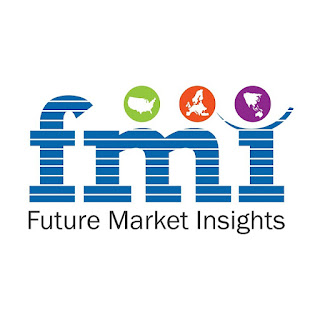Unlocking Innovations: Exploring the Disposable Medical Sensors Landscape By 2022 to 2032
The Disposable Medical Sensors Market refers to the industry that produces and sells sensors designed for single-use in medical applications. These sensors are used to monitor and measure various physiological parameters such as heart rate, blood pressure, temperature, oxygen levels, and more. They play a crucial role in healthcare settings by providing real-time data that helps in patient monitoring, disease diagnosis, and treatment.
The market for disposable medical sensors has been growing rapidly due to several factors. One of the primary drivers is the increasing prevalence of chronic diseases, such as cardiovascular diseases, diabetes, and respiratory disorders, which require continuous monitoring. Additionally, the rising demand for home healthcare and remote patient monitoring solutions has contributed to the growth of this market.
Accelerate Your Success: Unlock the Secrets of the Disposable Medical Sensors Market - Download the Sample Report @ https://www.futuremarketinsights.com/reports/sample/rep-gb-1004
Disposable medical sensors offer several advantages over reusable sensors. They eliminate the risk of cross-contamination between patients, reduce the need for cleaning and sterilization, and provide convenience and cost-effectiveness. These factors have further fueled their adoption in hospitals, clinics, ambulatory care centers, and home healthcare settings.
The market for disposable medical sensors is predicted to grow at a CAGR of 8.1% during the forecast period, from USD 6.5 billion in 2021 to USD 15.31 billion in 2032. Portable scanning tools called disposable medical sensors are used in diagnostic, patient monitoring, and therapeutic procedures. By converting the many forms of stimulation given to patients, disposable medical sensors are able to detect and convey information in the form of electrical signals.
Disposable medical sensors allow for continuous patient monitoring by measuring vital signs like temperature, pulse rate, blood oxygenation level, heart rate, and breathing rate. Various medical specialities, including cardiology, radiology, general medicine, neurology, ophthalmology, and urology, among others, use disposable medical sensors. The development of devices for cancer ablation treatments, cardiac arrhythmia, point-of-care diagnosis, painless glucose monitoring, wireless insulin delivering procedures, etc. is currently a trend in the global disposable medical sensors market.
Disposable Medical Sensors Market: Drivers and Restraints
The global market for disposable medical sensors is expected to expand quickly as a result of the rising prevalence of chronic diseases like cancer, acute myocardial infarction, and diabetes mellitus, particularly in the geriatric population.
Technology advances and rising innovations in the development of point-of-care medical sensors for diagnosis and monitoring outside of hospitals are major drivers for the disposable medical sensor market. Another opportunity for manufacturers is the concurrent rise in demand for remote patient monitoring and the next generation of disposable medical sensors, such as painless diabetic monitors and wearable wrist watches.
Large number of regulatory approvals for biodegradable sensors are also booming the global disposable medical sensors market. However lack of adequate reimbursement policies for novel technologies and stringent regulatory procedures are the major factors that can hamper the global disposable medical sensors growth over the forecast period.
Disposable Medical Sensors Market: Overview
The United States represents the largest market for disposable medical device sensors in North America, followed by Canada. Europe is expected to be the second largest region in the global disposable medical sensors market. Germany, France, and the U.K. are estimated to account for a major share in the Europe disposable medical sensors market over the forecast period. APAC is anticipated to represent a high growth rate in the next five years. By application type, monitoring devices particularly cardiac pacemakers and blood glucose monitorsare the dominant segment across globe due to high incidences of diabetes and cardiac diseases.
The diagnostic strips for HIV test, pregnancy test, blood glucose test and immunological test are anticipated to hold a high collective share in the global disposable medical sensors market. By end use, the hospitals and home care segments are projected to account for around 50% share in the global disposable medical sensors market and the trend is forecast to continue through the forecast period. By placement of sensors type, wearable sensors and strip sensors are estimated to register above average CAGR over the forecast period owing to its affordable price due to miniaturization of equipment.
Disposable Medical Sensors Market: Key Players
Key players of Mayo Clinic and Gentag, Sensirion AG, Measurement Specialities, Smiths Medical, ST Microelectronics, Philips Helathcare, Medtronic, Freescale Semiconductor, Inc., GE Healthcare, Analog Devices, Inc., Given Imaging, Honeywell International, Inc. and Coividien, plc. For instance, Gentag Company extended the near field communication (NFC) technology to accomplish remote patient monitoring worldwide. Freescale Semiconductor, Inc is developing lower-cost, semiconductor-based sensors with high sensitivity. The Measurement Specialities is developing customized products to satisfy patient need. Analog Devices, Inc. is collaborating with customers to accelerate the pace of innovation and produce breakthrough solutions for impossible conditions.
Disposable Medical Sensors Market: Segmentation
Based on application
- Patient monitoring
- Continuous Blood Pressure Monitoring
- Implantable Loop Recorder
- Cardiac Monitoring Electrode
- Pulse Oximeter
- Smart Pill
- Continuous Blood Glucose Monitoring
- Diagnostics
Based on Placement Type:
- Implantable sensors
- Invasive sensors
- Ingestible sensors
- Strip sensors
- Wearable sensors
Based on Type of Sensors:
- Biosensors
- Accelerometers
- Image sensors
- Pressure sensors
- Temperature sensors
- MR Position Sensors
- Force Sensors
- Humidity Sensors
Based on End User:
- Hospitals
- Home Care
- Diagnostic Laboratories
- Clinics

Comments
Post a Comment